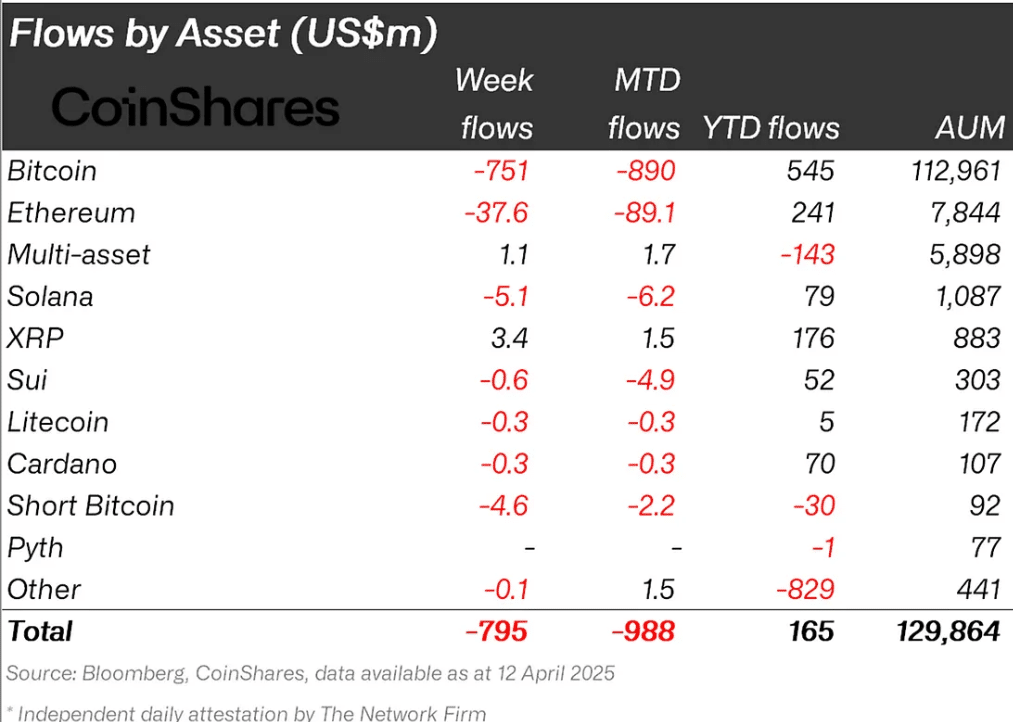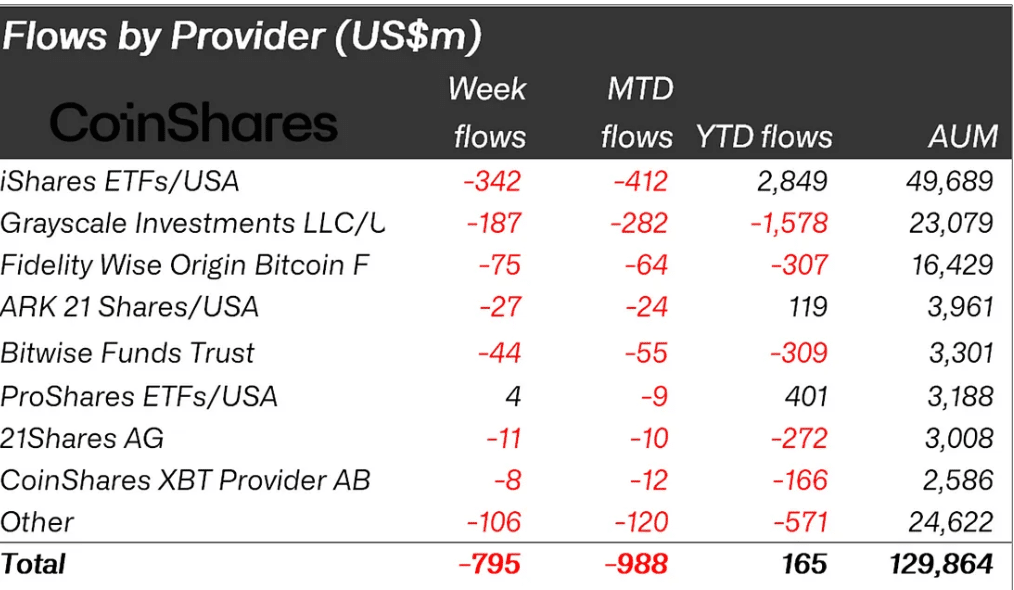- Investors pulled out $795 million from crypto funds last week
- Only XRP and multi-asset funds saw modest demand, while the rest faced sell-offs
Investors pulled $795 million from crypto funds last week, marking the third week of sell-offs. In fact, according to CoinShares’ weekly asset flows report, Bitcoin [BTC] led the outflows with $751 million, while Ethereum bled $37.6 million. The report linked the extended decline to tariff uncertainty.
“Digital asset investment products saw a 3rd consecutive week of outflows last week, totalling US$795m, as recent tariff activity continues to weigh on sentiment towards the asset class.”

Source: CoinShares
Investors prefer XRP
BlackRock’s iShares ETF products recorded the highest investor withdrawals (sell-off). As per the report, iShares’ BTC ETFs and ETH ETFs, collectively, saw $342 million outflows last week.
From a month-to-date (MTD) perspective, BlackRock bled $412 million, nearly half a billion over the past two weeks alone.


Source: CoinShares
Grayscale products followed closely with $187 million outflows, nearly half of BlackRock’s dump.
On the altcoins front, Solana-based products ranked third after ETH in outflows. The products saw a $5.1 million sell-off. Surprisingly, XRP-based and multi-asset funds were the only outliers during last week’s decline.
The report noted that XRP saw $3.4 million inflows last week, and the overall MTD flows stood at $1.5 million. Simply put, investors preferred XRP and multi-asset (crypto index ETFs) to individual assets like BTC or ETH in the first half of April.
Additionally, the aforementioned idea was further supported by record inflows into the new 2x Tecrium XRP ETF.
Worth noting, however, that some macro analysts projected that the decline could continue. Quinn Thompson, founder of macro-focused hedge fund Lekker Capital, stated that a recent speech by Fed chair Jerome Powell will be bad for risk assets in May, including crypto.
“Barring a collapse in economic data before then, they (Powell and Governor Waller) prefer patience amidst the elevated uncertainty. This is good for bonds but bad for risk assets.”

